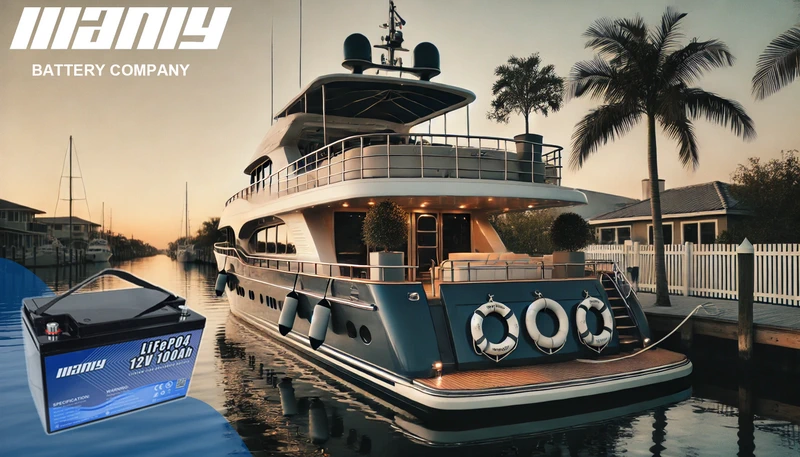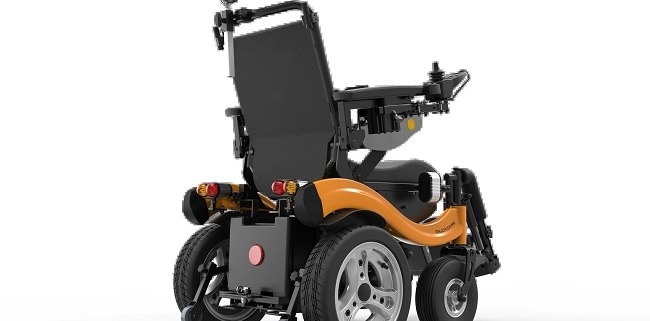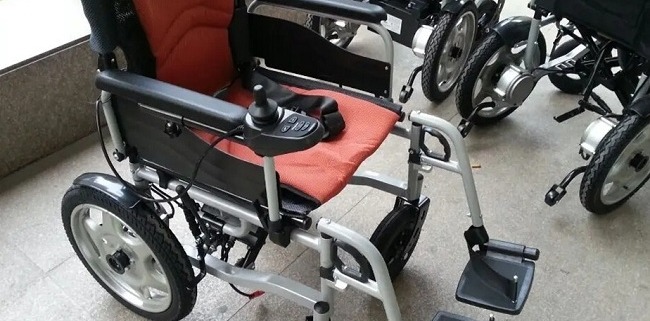What Type of Battery is a Marine Battery? A Detailed Breakdown
Table of Contents
- What Type of Battery is a Marine Battery? A Detailed Breakdown
- What is a Marine Battery?
- Different Types of Marine Batteries and Their Features
- The Best Choice: LiFePO4 Batteries for Marine Use
- Why LiFePO4 Batteries Are the Best Marine Batteries?
- Conclusion
- FAQ
- Hot Search
- Development overview of electric wheelchair
- Benefits of Electric Wheelchairs
- The concept and classification of power tools
Maintaining a consistent and dependable boating experience depends on choosing the right marine battery. Whether you use a trolling motor, start your engine, or run electronics, the appropriate battery type will make all the difference. The several choices for batteries make many sailors find it difficult to choose the right one.
This article will break apart lead-acid, AGM, gel, and LiFePO4 batteries as well as other types of marine batteries. You will learn every type in great depth, including its benefits, drawbacks, and optimal uses. By the conclusion, you will understand the reason LiFePO4 batteries are the best fit for marine applications.
What is a Marine Battery?
Designed especially to withstand adverse sea conditions, a marine battery is Unlike automobile batteries, which only provide short bursts of electricity to start an engine, marine batteries must deliver constant power for lengthy durations while tolerating vibrations, dampness, and temperature variations.
- Usually driven by its intended use, marine batteries are categorized:
- The starting battery runs the boat motor. It gives a brief, sharp boost but lacks long-term vitality.
- Deep-cycle batteries run constantly for lights, fish finders, and trolling motors among other equipment.
- A dual-purpose battery sometimes performs worse than dedicated beginning and deep cycle batteries, even if it aims to combine two uses.
These classification indicate the use of a marine battery, although the most important factor influencing battery performance is battery chemistry. Chemistry of a battery determines its general performance, longevity, efficiency, and maintenance requirements.
Different Types of Marine Batteries and Their Features
The several kinds of marine batteries are listed below, together with their characteristics:
Lead-Acid Marine Batteries
Lead-acid batteries have been used in marine conditions as they have been rather competitively priced and widely available for decades. These batteries chemically react with lead plates and sulphuric acid to generate power.
Flooded Lead-Acid (FLA) Batteries
Flooded lead-acid batteries are the most classic form. They demand consistent maintenance, including topped off distilled water. They are heavy, require ventilation, have a shorter lifetime than other battery types even if they are economically priced.
Sealed Lead-Acid Batteries
Lead-acid batteries sealed eliminate maintenance needs and are spill-proof. Two most widely used variants that improve performance over typical flooded lead-acid batteries are AGM (absorbed glass mat) batteries and gel batteries.
Advantages of Lead-Acid Marine Batteries
Lead-acid batteries are reasonably cheap and rather numerous. Their great starting current makes them worth using for engine cranking.
Disadvantages of Lead-Acid Marine Batteries
Lead-acid batteries need regular maintenance, weigh a lot, and charge slowly. Usually running for two to four years, their lifetime is short; they break down upon discharge below 50% capacity.
AGM (Absorbed Glass Mat) Marine Batteries
AGM batteries are spill-proof and maintenance-free by absorbing the electrolyte using fiberglass mats, therefore improving traditional lead-acid designs.
How do AGM Batteries Work?
By immobilising the electrolyte inside the glass mat, AGM batteries reduce the possibility of leaking and hence maximise power efficiency. Since this structure lets for better resistance to vibrations and faster charging periods, AGM batteries are a more durable replacement for flooded lead-acid batteries.
Advantages of AGM Marine Batteries
Zero maintenance and faster charging than other lead-acid models describe AGM batteries. Their lifetime is between three and six years, and they have more resistance to deep discharges.
Disadvantages of AGM Marine Batteries
AGM batteries remain heavier than lithium alternatives even with their superior performance. On a tight budget, they also appeal less to boaters since they cost more than flooded lead-acid batteries.
Gel Marine Batteries
Gel batteries use liquid electrolytes from a silica-based gel. Less leaks and greater deep discharge performance are made possible by this chemical composition.
How do Gel Batteries Work?
The gel-based electrolyte lowers chemical reactions, therefore reducing the possibility of overcharging or deep discharge. Applications needing constant, long-term power will find ideal use for these batteries.
Advantages of Gel Marine Batteries
Gel batteries resist high temperatures, maintain a longer lifetime than flooded lead-acid batteries, and require no maintenance.
Disadvantages of Gel Marine Batteries
The slow charging rate of gel batteries is its biggest drawback. Furthermore expensive than AGM and flooded lead-acid batteries are they are. Less forgiving than other battery kinds, overcharging can damage a battery permanently.
The Best Choice: LiFePO4 Batteries for Marine Use
The most intelligent and powerful marine batteries are LiFePO4 (Lithium Iron Phosphate). Unlike lead-acid batteries, which rely on chemical interactions between lead and acid, they offer constant and dependable power by means of lithium-ion technology.
Why LiFePO4 Batteries are Superior?
Among their most important benefits are LiFePO4 batteries’ extended lifespan. Lead-acid batteries run two to six years; LiFePO4 batteries can run ten years or more. Since they weigh up to 70% less than lead-acid batteries and are more easily handled, they also greatly improve boat performance.
Charging time offers still another major advantage. Five times faster charging of LiFePO4 batteries than with lead-acid batteries Unlike lead-acid batteries, which have to be kept above 50% charge, they also enable total discharges free from battery damage.
Are There Any Drawbacks to LiFePO4 Batteries?
The sole negative of LiFePO4 batteries is their starting cost. For seasoned sailors, however, they are the most affordable choice because of their long lifetime, fast charge times, and low maintenance needs.
Why LiFePO4 Batteries Are the Best Marine Batteries?
LiFePO4 batteries have long-term benefits above all other battery models, even if their initial expense makes many sailors unwilling to switch. Boats carrying LiFePO4 batteries had 30% longer running lifetime on electronic systems and trolling motors, according a study by marine engineers.
Savings in weight also improve performance. LiFePO4 technology lets a boat greatly reduce the weight of its battery, therefore enhancing fuel economy and general maneuverability. Boaters looking for dependability, fast charging, and long-lasting performance would best invest in LiFePO4 batteries.
Conclusion
The perfect sailing voyage depends on selecting the right marine battery. Though lead-acid, AGM, and gel batteries are still somewhat popular, none give the efficiency, lifetime, and long-term savings LiFePO4 batteries offer.
LiFePO4 batteries from MANLY Battery provide the finest answer if you want a dependable and high-performance marine battery. Their innovative lithium technology guarantees exceptional energy economy, therefore assuring that your boat keeps running without the trouble of regular replacements.
For premium-quality marine batteries, visit MANLY Battery today and experience the next generation of marine power solutions.
FAQ
1. Is a deep cycle battery the same as a marine battery?
Let’s clarify: a deep cycle battery and a marine battery aren’t the same, although they have similarities. Here’s why:
A deep cycle battery provides a steady power flow over an extended period. It’s designed for applications that need consistent energy, like golf carts, RVs, or renewable energy systems. These batteries are built to handle repeated discharges and recharges without losing performance.
On the other hand, a marine battery is specifically made for boats. However, marine batteries come in two types: starting and deep cycle. A starting battery delivers a quick surge of power to start the engine, while a deep cycle marine battery powers your boat’s electronics and other devices.
So, while some marine batteries are deep cycle, not all deep cycle batteries work as marine batteries. If you’re choosing a battery for your boat, ensure it’s designed for marine use to get the most reliable power.
2. What are the three types of marine batteries?
Marine batteries come in three main types, each serving a different purpose. Understanding their roles helps you pick the right one for your boat:
- Starting Batteries: Starting batteries provide a quick burst of power to start your engine. They’re all about delivering a high-energy jolt for a short time. These batteries are not designed to power other devices, so they focus only on getting your engine running.
- Deep Cycle Batteries: Need power for your boat’s electronics, trolling motor, or other accessories? Deep cycle batteries are your answer. They deliver steady, long-lasting energy and can discharge and recharge multiple times without losing capacity. Perfect for extended trips or when you’re off the grid!
- Dual Purpose Batteries: As the name suggests, dual purpose batteries combine the functions of both starting and deep cycle batteries. They give you enough power to start your engine and supply energy to your accessories. They offer versatility but may not provide as much power as a dedicated starting or deep cycle battery.
Hot Search
Marine Lithium Battery Battery Manufacturer
Hello
1. The invention of electric wheelchairs was around the beginning of the 20th century.
2. The United States issued the first patent certificate for electric wheelchair in 1940.
3. Reasons why the early products are not paid much attention: the healing condition of the severely disabled people is not good, and the early products are heavy, low in efficiency, low reliability and other factors.
4. After the Second World War, the number of disabled people in Dajing Niuhuai surged, and the market demand also increased suddenly.
From 5 to 1970s, the stability of the controller was gradually improved, and some special control interfaces were also successfully developed.
6. In the 1980s, due to the microprocessor and the application in the manufacture of the controller, the controllability and stability were greatly improved.
7. In the 1990s, the development of electric wheelchairs was mainly based on the improvement of structural design, including:
1) Various skeletons designed for electric wheelchairs
2) The design of the separation of the seat system and the transmission base
3) Design of transmission wheels in different positions.
Manly, engaged in lithium battery with 13+ years experience, custom electric wheelchair battery available, contact us for more details.
The electric wheelchair is based on the traditional hand-push wheelchair, and is equipped with high-performance power drive device (motor), intelligent control system, battery, electromagnetic brake and other components, and is transformed and upgraded. The electric wheelchair has an artificial intelligence control system, which can make the wheelchair complete various functions such as forward, backward, steering, standing, lying down, etc. through simple operations; the new generation of intelligent electric wheelchair is a modern precision machinery, intelligent numerical control technology, engineering mechanics High-tech products combined with other fields.
Different from traditional electric tricycles, electric vehicles, bicycles and other means of transportation, electric wheelchairs have an intelligent control system. Elderly and disabled people with limited mobility can travel freely as long as they are conscious. In today’s aging society, electric wheelchairs have become an indispensable means of transportation for the elderly and disabled people with limited mobility. Especially in recent years, the rapid development of portable foldable lithium battery electric wheelchairs and portable lithium battery scooters has better satisfied the dreams of the elderly and disabled friends to travel.
Advantages of electric wheelchairs:
1. Wide audience
The elderly are all potential consumers of electric wheelchairs. Compared with traditional wheelchairs, the powerful functions of electric wheelchairs are not only suitable for the elderly and infirm, but also for severely disabled patients. Smooth and safe driving, slow and adjustable speed, and intelligent electromagnetic brakes are the unique advantages of electric wheelchairs. All safety settings and smart devices of electric wheelchairs are specially designed for the elderly and disabled;
2. Convenience
The traditional hand-push wheelchair must rely on manpower to move forward. If there is no one around to take care of it, it is very difficult to travel alone. The electric wheelchair is different. The elderly and disabled people with limited mobility can drive the electric wheelchair to travel by themselves, which greatly improves the mobility of the disabled. Self-care ability, expanding their scope of action and communication circle, are of great benefit to their mental and physical health;
3. Environmental protection
Electric wheelchair adopts electric drive, zero emission, no pollution, and the most environmentally friendly;
4. Safety
The electric wheelchair control technology is very mature, and the brake equipment on the body can only be mass-produced after being tested and qualified by professional equipment for many times. The probability of losing control of the electric wheelchair is close to zero; the equipment such as slow speed, anti-backward tilting device, universal drive, intelligent electromagnetic brake, etc., ensures that the electric wheelchair does not roll over or roll backwards and other safety hazards;
5. Enhance self-care ability
Use an electric wheelchair to enhance self-care ability. Shopping for groceries, visiting parks, supermarkets, traveling, and other things that used to be served by others, can be done by yourself with an electric wheelchair. It not only saves the cost of care and labor, but also better realizes their life value. Their psychology no longer feels that it is the “drag” of their family members, and their mood will be more comfortable!
The concept and classification of power tools:
A tool that is held and operated by hand, uses a low-power motor or electromagnet as a power, and drives the work head through a transmission mechanism is called a power tool.
Its classification is generally divided into three categories according to the corresponding working materials: masonry tools, metalworking tools, and woodworking tools. With the popularity of power tools and the increase of cross-work types, many tools no longer simply work on one material, but are generally marked with their most important and common working conditions.
Some notes for power tools:
1. The main safety protection is required during the use of power tools. Safety protection includes: goggles, helmets, masks (gas masks), earplugs, gloves (wire type gloves are not allowed for rotating tools), protective clothing, insulating shoes, etc. And before using the tool, read the product manual or use it under the guidance of skilled workers. Unless otherwise specified, power tools require two-hand operation.
2. Hand-held power tools (Class II power tools) have double insulation protection, namely basic insulation and reinforced insulation, which are represented by the word “back”. During the working process, keep the power cord intact, otherwise there will be danger of leakage. Do not use in damp, underwater, flammable and explosive places.
3. The electric tool uses a series motor as the motor, and the motor consists of a rotor, a stator and a carbon brush. It is easy to cause the motor to burn out under overload conditions.
Manly Battery Co.,Ltd specializes in providing energy storage power, UPS backup power, power supply and new energy system solutions and operation and maintenance services for new energy, electric wheels, smart energy storage and green power applications. Among them, the field of network energy mainly includes communications, power, data centers, financial securities, rail transit, etc.; the field of smart energy storage mainly includes household energy storage, industrial and commercial energy storage, and microgrid energy storage systems; the field of green power mainly includes forklifts, low-speed electric vehicles, off-road vehicles, etc. At present, the main products are lithium-ion batteries and systems, lead-acid battery replacement lithium batteries and systems, and new energy system integration products and services. Please contact:
[email protected]







